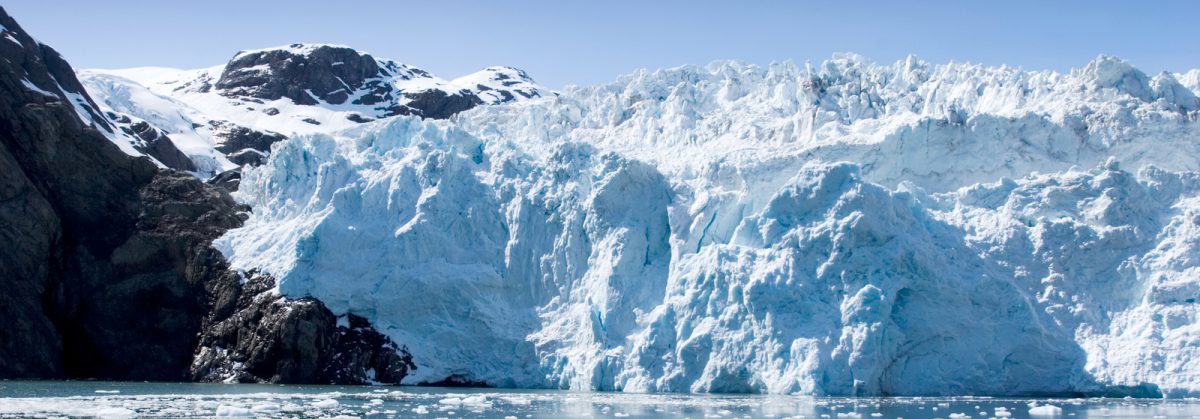 Bluebird day. Perfect for sailing and viewing a glacier. Bit chilly first thing but then almost T shirt in the sun! Hubbard Glacier, in eastern Alaska and part of Yukon, Canada, and named after Gardiner Hubbard. It is nicknamed the “Galloping Glacier, because of how quickly it’s advancing toward the Gulf of Alaska through Disenchantment Bay. Moving about 7′ a day. In fact, its movement temporarily formed a natural dam that twice closed off nearby Russell Fjord from the bay, but the intense water pressure building within the fjord-turned-lake has so far been enough to explode through the wall of ice.
Bluebird day. Perfect for sailing and viewing a glacier. Bit chilly first thing but then almost T shirt in the sun! Hubbard Glacier, in eastern Alaska and part of Yukon, Canada, and named after Gardiner Hubbard. It is nicknamed the “Galloping Glacier, because of how quickly it’s advancing toward the Gulf of Alaska through Disenchantment Bay. Moving about 7′ a day. In fact, its movement temporarily formed a natural dam that twice closed off nearby Russell Fjord from the bay, but the intense water pressure building within the fjord-turned-lake has so far been enough to explode through the wall of ice.
 Rapid advancement results in major calving — the dramatic breaking off of chunks of ice at the edge of a glacier. We saw several smaller examples of this but not much noise as not quite close enough. Lots of floating chunks of ice or growlers as they are called. Bigger bits are known bergy bits. The chunks can be quite sculptured and sometimes striated due to the glacial pressures. Some are striped by minerals and/or dust.
Rapid advancement results in major calving — the dramatic breaking off of chunks of ice at the edge of a glacier. We saw several smaller examples of this but not much noise as not quite close enough. Lots of floating chunks of ice or growlers as they are called. Bigger bits are known bergy bits. The chunks can be quite sculptured and sometimes striated due to the glacial pressures. Some are striped by minerals and/or dust.
The largest tidewater glacier in North America, Hubbard Glacier is 80 miles long and plunges 1,200 feet into the depths of the bay. The face is 6 miles across. Its immense beauty and hues are enthralling, even from afar. The towering mountains and other glaciers nearby just add to dramatic scene.
The area around Hubbard Glacier is also renowned for its wildlife, where whales, harbor seals and otters swim, brown bears, moose and black-tailed deer roam ashore, and a wide variety of seabirds soar gracefully across the sky. Several bears were seen but not by us!
Link to Hubbard Glacier photos
Author: Gill
Hi. I'm fun-loving, creative, mostly energetic and a mother of 3.
My interests are family, culinary pursuits (I own just a few cookbooks...), socialising and entertaining, living and always learning.


